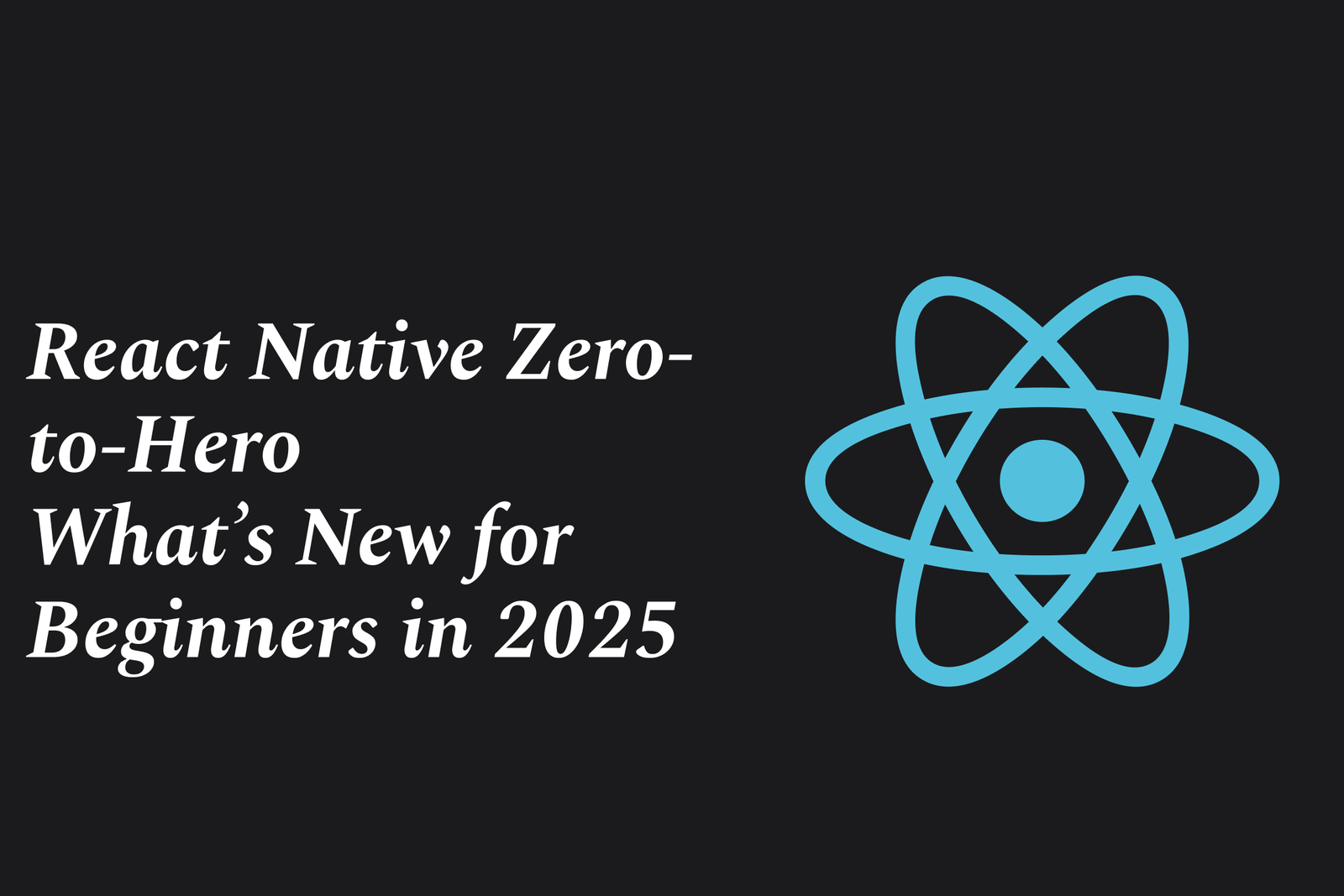React Native Zero-To-Hero: What?S New For Beginners In 2025
React Native Zero-to-Hero 2025 guides beginners through the latest updates, including a revamped architecture with Fabric & TurboModules, enhanced debugging, and powerful Expo tools—making cross-platform mobile app development faster, easier, and more efficient than ever.
React Native Zero to Hero: What’s New for Beginners in 2025
1 ) The Time for React Native is Now
2025 marks an excellent moment to start building apps with React Native. The framework has evolved significantly since 2015 and is now more powerful, efficient, and supported by major companies like Shopify, Microsoft, and Meta. React Native is no longer just a trend but a proven cross platform solution for mobile app development.
2 ) The New Architecture: React Native’s Core Overhaul
React Native’s new architecture introduces two major upgrades: Fabric and TurboModules.
Fabric: A faster and more flexible rendering system enabling smooth and complex UI updates.
TurboModules: Optimized native module loading that makes apps lightweight, faster to start, and highly scalable.
This overhaul improves performance, provides multi threaded rendering, enables smooth animations, and supports advanced features like AR and heavy media applications. Beginners jumping into React Native in 2025 will benefit from these enhancements for building high quality, scalable apps.
3 ) Next Level Debugging Tools
Debugging in React Native has been greatly improved with new development tools in 2025. The updated React Native DevTools provide capabilities for inspecting component trees, props, setting breakpoints, and analyzing network activity, making debugging faster and more efficient.
Additional tools like Reactotron, platform specific dev tools, and Expo DevTool Plugins further empower developers to debug thoroughly and inspect app components such as SQLite databases with ease.
4 ) Expo: A Game Changer for React Native Development
Expo has matured significantly and is now highly recommended for building React Native apps. It simplifies setup, removing complex configurations and native module struggles.
With features like:
EAS Build and Submit: Streamline app building and deployment to Apple App Store and Google Play Store.
Bare workflow and Prebuild: Support for adding custom native modules.
Expo Router: Offers file based routing similar to Next.js, easing transition for web developers.
Expo empowers beginners and professionals alike with accessible and powerful tools to build and ship production ready mobile applications efficiently.
5 ) Summary for Beginners
For beginners in 2025, React Native presents a robust, fast, and modern environment with:
A completely revamped core architecture improving app speed and scalability.
Enhanced debugging tools that reduce development friction.
A simplified, feature rich ecosystem through Expo that accelerates app building and deployment.
Starting React Native now means using one of the best supported frameworks capable of delivering native like mobile experiences across iOS and Android using JavaScript and React paradigms.
Conclusion
If you're new to React Native in 2025, you’re joining a community and ecosystem that has matured into a top choice for cross platform mobile development. The new architecture and Expo’s advances mean you’ll be able to build complex, performant, and production ready apps faster and with less hassle than ever before. The time to become a React Native developer is now.
https://justacademy.in/news-detail/top-android-customization-features-this-year
https://justacademy.in/news-detail/android-app-monetization-strategies-2025
https://justacademy.in/news-detail/flutter-now-supports-desktop-and-embedded-devices
https://justacademy.in/news-detail/android-health-and-fitness-app-updates
https://justacademy.in/news-detail/android-split-screen-multitasking-news
Related Posts
Java supports GDPR and data privacy by enabling secure data handling through encryption, controlled access, and precise data management. It allows developers to minimize PII exposure, ensure data confidentiality, and design workflows that comply with data protection regulations effectively.
Java code quality tools have evolved to include advanced static analysis, integrated security checks, and AI-powered code reviews. These updates help developers detect bugs, enforce coding standards, and enhance security, streamlining the development process and improving overall code reliability.
Java remains a cornerstone in big tech companies, evolving with modern features like records, pattern matching, and virtual threads. Its robust ecosystem, enhanced performance, and growing AI integrations keep it vital for both legacy systems and innovative new projects.
Java and CI/CD pipeline optimizations streamline Java application development by automating builds, tests, and deployments. They improve efficiency through parallelization, caching, and secure secrets management, enabling faster feedback loops and more reliable, scalable software delivery.
Java supports modern cryptography standards through its flexible Java Cryptography Architecture (JCA), enabling integration of advanced algorithms like AES, EdDSA, and post-quantum tools. Libraries like Bouncy Castle offer FIPS-certified, hardware-accelerated implementations for secure development.
Java 23 enhances record patterns by enabling concise, direct destructuring of record components within pattern matching, simplifying type checks and data extraction. This improvement boosts code readability and expressiveness by reducing boilerplate in handling immutable data classes.
Java remains a top choice for mobile app backends, powering scalable, secure, and high-performance server-side solutions. Latest trends include cloud-native microservices, reactive programming, and enhanced JVM optimizations, enabling efficient, flexible, and robust mobile backend development.
Java SE 24 and LTS Java SE 21 offer enhanced features and performance, while Apache Spark 4.0.0 introduces Scala 2.13 support and advanced ML and SQL capabilities. Together, they empower developers to build scalable, high-performance data applications with modern tools.
JUnit 5 modernizes Java testing with a modular architecture, improved assertions, and seamless Java 8+ support. Beyond JUnit, tools like Mockito and AssertJ enhance mocking and assertions, creating a powerful, flexible ecosystem for writing clean, efficient Java unit tests.
Java plays a pivotal role in cloud automation tools by providing a robust, platform-independent language used to build scalable automation frameworks like Jenkins and Selenium, enabling efficient CI/CD pipelines, testing, and orchestration across diverse cloud environments.










